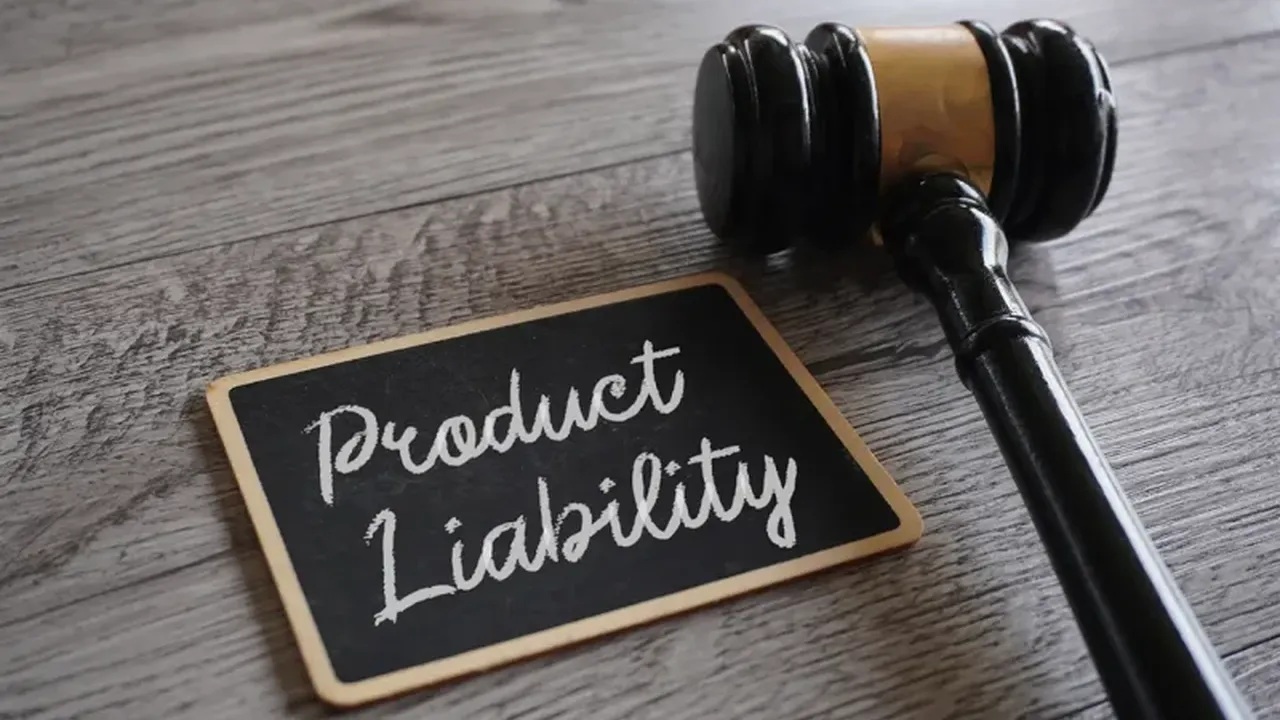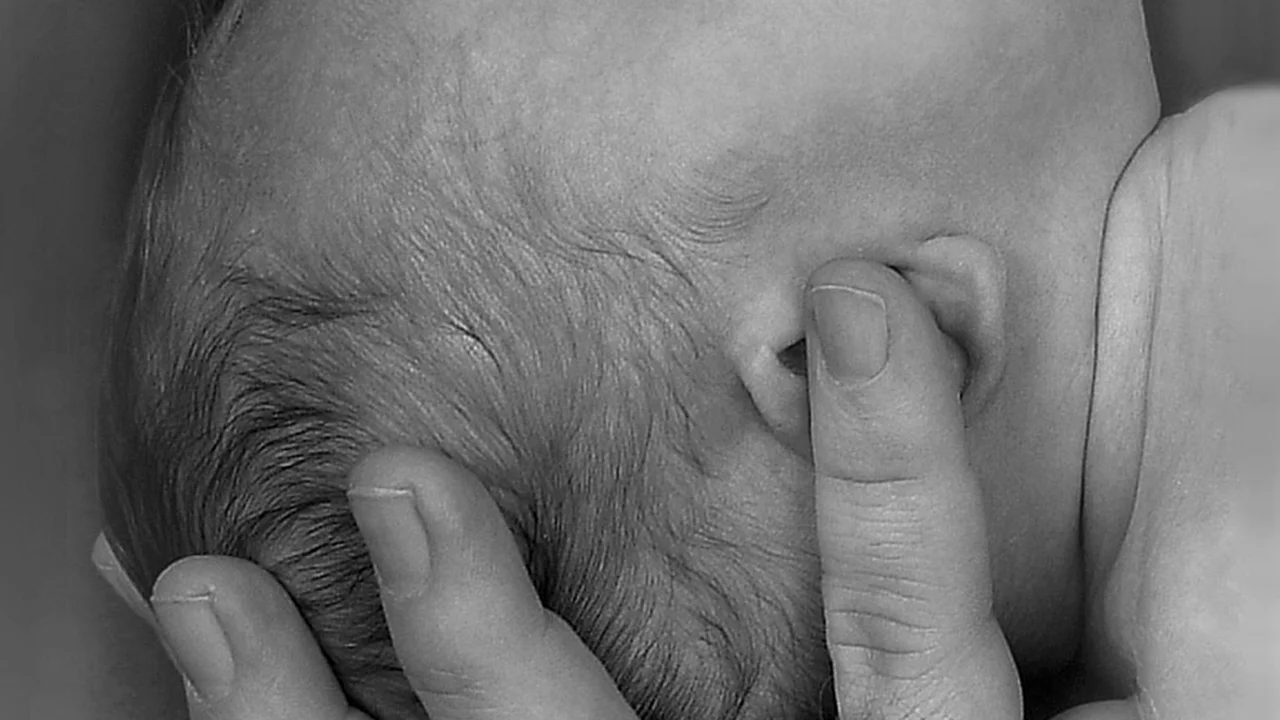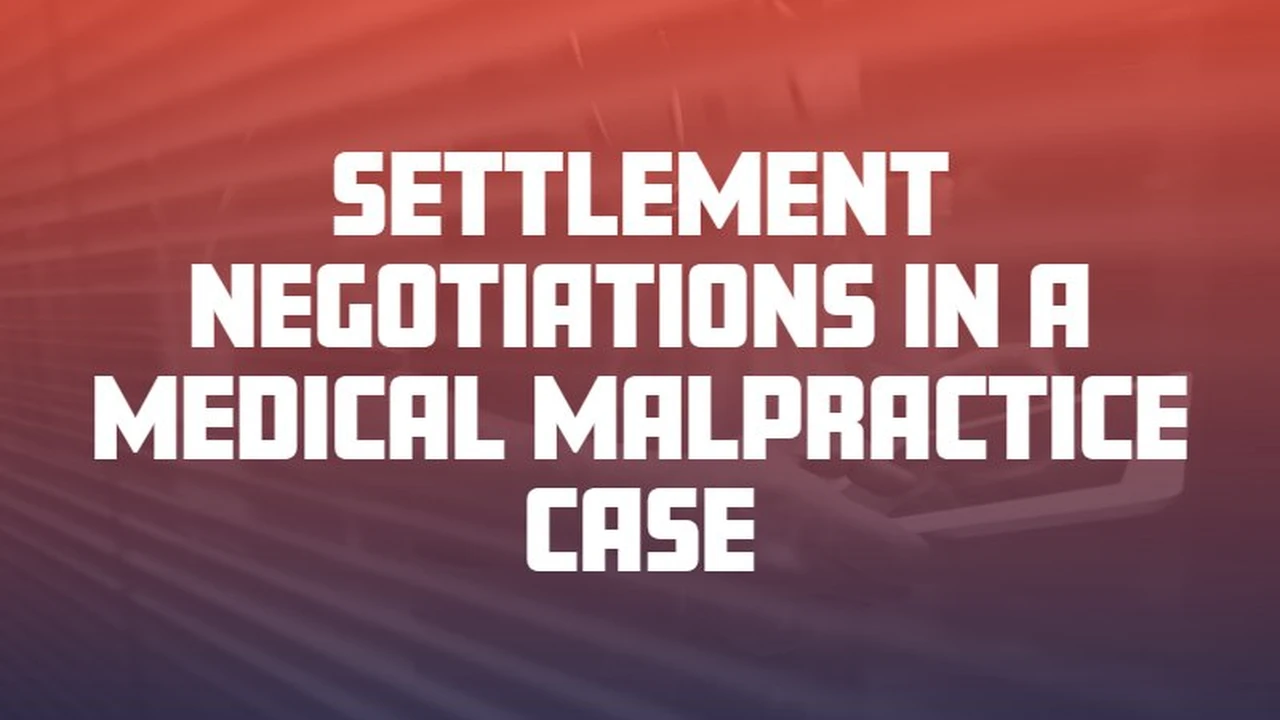Childrens Product Liability Dangers
Essential information for pursuing a personal injury claim for defective medical devices.

Medical Device Product Liability Lawsuits
Understanding Defective Medical Devices and Your Rights
Hey there! Let's talk about something super important: medical devices. We trust these gadgets, from pacemakers to hip implants, to help us live healthier, longer lives. But what happens when they don't work as they should? What if a medical device is actually defective and causes you harm? That's where medical device product liability lawsuits come into play, and understanding your rights is absolutely crucial.
When you undergo a medical procedure or treatment, you expect the tools and implants used to be safe and effective. Unfortunately, that's not always the case. Defective medical devices can lead to serious injuries, additional surgeries, prolonged pain, and even death. If you've been injured by a medical device, you're not alone, and you might have a strong case for compensation.
Common Types of Defective Medical Devices and Associated Injuries
It's a wide world out there when it comes to medical devices, and unfortunately, defects can pop up in many different forms. Let's break down some of the most common culprits and the kinds of injuries they can cause. Knowing these can help you identify if your situation fits the bill.
Hip and Knee Implants Defective Joint Replacements
Joint replacements, especially for hips and knees, are designed to improve mobility and reduce pain. However, some models have been plagued by defects. For example, certain metal-on-metal hip implants, like the DePuy ASR XL Acetabular System or the Stryker Rejuvenate and ABG II modular-neck hip stems, were found to shed metal particles into the bloodstream. This can lead to metallosis (metal poisoning), tissue damage, pseudotumors, and the need for painful revision surgeries. Patients often experience severe pain, limited mobility, and systemic health issues. The average cost for a hip replacement can range from $30,000 to $50,000, and revision surgeries can be even more expensive, not to mention the lost wages and emotional distress.
Transvaginal Mesh Defective Pelvic Organ Support
Transvaginal mesh was designed to treat pelvic organ prolapse (POP) and stress urinary incontinence (SUI) in women. Brands like Ethicon (a Johnson & Johnson company) and Boston Scientific manufactured these devices. However, many women experienced severe complications, including mesh erosion, chronic pain, infection, organ perforation, and painful intercourse. These issues often required multiple surgeries to remove the mesh, which isn't always possible. The physical and emotional toll has been immense, with many women facing permanent disability and a significantly reduced quality of life. A single mesh removal surgery can cost upwards of $15,000, and many women need several.
IVC Filters Defective Blood Clot Prevention
Inferior Vena Cava (IVC) filters, such as those made by C.R. Bard (e.g., Bard G2, Bard Recovery) and Cook Medical (e.g., Cook Celect, Cook Günther Tulip), are small, cage-like devices implanted in the vena cava to prevent blood clots from reaching the lungs. The problem? Many of these filters have been found to fracture, migrate, or perforate the vena cava, leading to serious internal injuries, organ damage, and even death. Patients might experience chest pain, shortness of breath, or internal bleeding. The cost of implanting an IVC filter is typically $5,000-$10,000, but the cost of complications and removal can skyrocket.
Hernia Mesh Defective Surgical Repair
Hernia mesh, used to repair hernias, has also been a source of significant problems. Manufacturers like Ethicon (Physiomesh) and C.R. Bard (Ventrio, PerFix) have faced lawsuits. Defects can lead to chronic pain, infection, mesh migration, adhesion to organs, and hernia recurrence, often necessitating further surgeries. The mesh can shrink or degrade, causing severe discomfort and debilitating complications. A hernia repair surgery can cost $4,000-$10,000, but complications can lead to much higher medical bills.
Pacemakers and Defibrillators Defective Cardiac Devices
These life-saving devices regulate heart rhythm. However, defects in models from companies like Medtronic or St. Jude Medical (now Abbott) have led to premature battery depletion, lead fractures, or software malfunctions. These issues can cause irregular heartbeats, fainting, or even sudden cardiac arrest, requiring urgent replacement surgery. The cost of a pacemaker implant can be $20,000-$50,000, and a defibrillator even more, with replacement surgeries adding significantly to the financial burden.
Insulin Pumps Defective Diabetes Management
Insulin pumps, like those from Medtronic (e.g., MiniMed) or Animas (now discontinued), are vital for managing diabetes. Defects can include software glitches, faulty alarms, or incorrect insulin delivery, leading to dangerously high or low blood sugar levels. This can result in diabetic ketoacidosis, hypoglycemia, coma, or even death. The pumps themselves can cost several thousand dollars, but the medical emergencies they can cause are far more costly and life-threatening.
The Legal Basis for Your Claim Proving a Defect
So, you suspect a medical device caused your injury. How do you prove it in court? Generally, product liability claims for medical devices fall into three main categories. Understanding these is key to building a strong case.
Manufacturing Defects When Something Went Wrong in Production
This is when a medical device leaves the factory floor with a flaw, even though the design was perfectly safe. Think of it like this: the blueprint was fine, but the construction worker messed up. Maybe a batch of hip implants had a weak spot due to an error in the manufacturing process, or an IVC filter wasn't welded correctly. Proving a manufacturing defect often involves showing that your specific device was different from the intended design and that this difference caused your injury.
Design Defects When the Product Was Inherently Flawed
A design defect means the product was inherently dangerous from the get-go, even if it was manufactured perfectly according to its specifications. The blueprint itself was flawed. For example, if a transvaginal mesh was designed in a way that made erosion and infection almost inevitable for a significant number of users, that's a design defect. To prove this, you'd typically need to show there was a safer, economically feasible alternative design available at the time the product was made, and the manufacturer failed to use it.
Warning Defects Failure to Warn About Risks
Sometimes, a medical device isn't defective in its manufacturing or design, but the manufacturer failed to provide adequate warnings about its potential risks or proper usage. This is often called a 'failure to warn' or 'marketing defect.' For instance, if a drug-eluting stent had a known risk of causing severe allergic reactions in a subset of patients, but the manufacturer didn't clearly communicate this to doctors or patients, that could be a warning defect. This also includes inadequate instructions for use. Manufacturers have a duty to warn about non-obvious dangers associated with their products.
Who Can Be Held Responsible Identifying the Liable Parties
When a defective medical device causes harm, it's not always just the manufacturer who can be held accountable. There's a whole chain of responsibility, and identifying all potential liable parties is crucial for maximizing your compensation.
The Manufacturer The Primary Target
This is usually the main defendant in a product liability lawsuit. The company that designed, manufactured, and marketed the defective device is typically held responsible under strict liability laws. This means you don't necessarily have to prove negligence; you just need to prove the product was defective and caused your injury. Big names like Johnson & Johnson, Medtronic, Stryker, and Boston Scientific have faced numerous lawsuits.
Distributors and Retailers The Supply Chain
Sometimes, the distributors or even the retailers (though less common for medical devices sold directly to hospitals) can also be held liable. If they were involved in the chain of commerce and sold a defective product, they might share some responsibility, especially if they had a role in packaging or labeling that contributed to the defect or lack of warning.
Hospitals and Doctors When Medical Negligence Plays a Role
While less common in pure product liability cases, hospitals or individual doctors could be held liable if their negligence contributed to your injury. This isn't about the device being defective, but about how it was used or recommended. For example, if a doctor implanted a device knowing it was recalled, or if a hospital failed to properly maintain equipment, leading to a device malfunction, that could open the door to a medical malpractice claim alongside the product liability claim. This is a more complex scenario, often requiring expert testimony to establish the standard of care.
The Process of a Medical Device Lawsuit What to Expect
Navigating a medical device lawsuit can feel overwhelming, but understanding the general steps can help demystify the process. It's not a quick fix, but a dedicated legal team can guide you through it.
Initial Consultation and Case Evaluation Your First Step
This is where you meet with a personal injury lawyer specializing in product liability. You'll discuss your injuries, the medical device involved, and your medical history. The lawyer will assess the viability of your claim, looking for evidence of a defect and causation. This is usually a free consultation, so don't hesitate to reach out.
Investigation and Evidence Gathering Building Your Case
Once your lawyer takes on your case, a thorough investigation begins. This involves collecting all your medical records, including surgical reports, imaging scans, and doctor's notes. They'll also gather information about the specific medical device, including its manufacturing history, recall notices, and any adverse event reports filed with regulatory bodies like the FDA in the USA or similar agencies in Southeast Asia. Expert witnesses, such as engineers or medical professionals, may be consulted to provide opinions on the device's defect and its link to your injuries.
Filing the Lawsuit The Formal Complaint
If the investigation supports a strong claim, your lawyer will file a formal complaint in court. This document outlines the facts of your case, the legal basis for your claim, and the damages you're seeking. This officially starts the legal proceedings.
Discovery Exchanging Information
This phase involves both sides exchanging information and evidence. It can include written questions (interrogatories), requests for documents, and depositions (out-of-court sworn testimonies) from you, medical professionals, and company representatives. This is a critical stage for uncovering facts and building leverage.
Negotiation and Mediation Seeking a Settlement
Many product liability cases settle out of court. Your lawyer will negotiate with the defendant's legal team to reach a fair settlement that compensates you for your damages. Sometimes, mediation, where a neutral third party helps facilitate discussions, is used to try and resolve the case without going to trial.
Trial When a Settlement Isn't Reached
If a settlement cannot be reached, the case will proceed to trial. This involves presenting your case to a judge and/or jury, who will then decide on liability and damages. Trials can be lengthy and complex, but your lawyer will represent your interests every step of the way.
Damages You Can Recover Compensation for Your Injuries
If your medical device product liability lawsuit is successful, you can recover various types of damages designed to compensate you for your losses. These can be substantial, reflecting the severe impact these injuries can have on your life.
Medical Expenses Past and Future Costs
This includes all medical bills related to your injury, from the initial surgery to implant the defective device, to subsequent revision surgeries, hospital stays, medications, physical therapy, and ongoing medical care. It also covers future medical expenses you are reasonably expected to incur due to the injury.
Lost Wages and Earning Capacity Income Loss
If your injury prevented you from working, you can claim compensation for lost wages. If the injury has permanently affected your ability to earn a living or reduced your earning capacity, you can also seek damages for future lost income.
Pain and Suffering Physical and Emotional Distress
This is a significant component of damages in personal injury cases. It compensates you for the physical pain, emotional distress, mental anguish, and loss of enjoyment of life caused by the defective device and its complications. This is often subjective but can be substantial.
Other Damages Property Damage and Punitive Damages
In some cases, if the defective device caused damage to other property (though less common with internal medical devices), that could be included. More importantly, in cases where the manufacturer's conduct was particularly egregious or reckless, punitive damages might be awarded. These are not to compensate you but to punish the defendant and deter similar conduct in the future.
Statute of Limitations Don't Miss Your Window
This is super important: there's a time limit for filing a medical device product liability lawsuit. This is called the 'statute of limitations.' If you miss this deadline, you could lose your right to seek compensation, no matter how strong your case is.
USA Statute of Limitations Varies by State
In the United States, the statute of limitations for product liability claims varies significantly from state to state. It can range from as little as one year to as long as six years, with two or three years being common. The clock usually starts ticking from the date of injury or the date you discovered (or reasonably should have discovered) that your injury was caused by the defective device. This 'discovery rule' is crucial in medical device cases, as complications might not appear immediately.
Southeast Asia Statute of Limitations Country Specific
Similarly, in Southeast Asian countries, the statute of limitations will depend on the specific country's laws. For example, in Singapore, the limitation period for personal injury claims is generally three years from the date the cause of action accrued. In Malaysia, it's typically six years. Thailand also has a one-year limitation period for tort claims from the date of knowledge of the injury and the wrongdoer, but not exceeding ten years from the date of the wrongful act. Given these variations, it's absolutely essential to consult with a lawyer who understands the specific laws of the jurisdiction where your injury occurred or where the device was sold.
Why You Need an Experienced Product Liability Lawyer Your Best Advocate
Dealing with a defective medical device injury is tough enough. Trying to take on a large medical device manufacturer and their army of lawyers by yourself? That's a battle you don't want to fight alone. Here's why an experienced product liability lawyer is your best asset:
Expertise in Complex Litigation Navigating the Legal Maze
Medical device lawsuits are incredibly complex. They involve intricate medical science, engineering principles, and sophisticated legal arguments. A specialized lawyer has the knowledge and experience to understand these complexities, gather the right evidence, and present a compelling case.
Access to Resources and Experts Building a Strong Case
Top product liability firms have the financial resources to fund expensive litigation, including hiring medical experts, engineers, and other specialists who can provide crucial testimony. They also have access to databases of similar cases and adverse event reports, which can be vital for proving a pattern of defects.
Negotiation Skills Maximizing Your Settlement
Insurance companies and corporate legal teams are formidable negotiators. An experienced lawyer knows their tactics and can effectively advocate for your best interests, ensuring you receive fair compensation for all your damages, not just what they initially offer.
Peace of Mind Focusing on Your Recovery
When you're recovering from an injury, the last thing you need is the stress of a lawsuit. Handing your case over to a competent lawyer allows you to focus on your health and well-being, knowing that your legal rights are being protected.
Comparing Medical Device Product Liability in USA vs Southeast Asia Legal Frameworks
While the goal of seeking compensation for defective medical devices is universal, the legal landscapes in the USA and Southeast Asia have some distinct differences that are worth noting.
USA Product Liability Strong Consumer Protections
The USA generally has very robust product liability laws, often operating under a 'strict liability' standard. This means that if a product is found to be defective and causes injury, the manufacturer can be held liable regardless of whether they were negligent in its production. This makes it easier for plaintiffs to win cases, as they don't have to prove the manufacturer acted carelessly. The FDA also plays a significant role in regulating medical devices, and their adverse event reporting system (MAUDE database) is a crucial source of evidence. Class action lawsuits and multidistrict litigation (MDL) are common for widespread defective medical devices, allowing many plaintiffs to consolidate their cases.
Southeast Asia Product Liability Evolving Landscape
Product liability laws in Southeast Asian countries are generally less developed and more varied than in the USA. While many countries, like Singapore, Malaysia, and Thailand, have consumer protection acts that allow for claims against manufacturers of defective products, the legal framework might lean more towards proving negligence rather than strict liability. This can make it more challenging for plaintiffs. Regulatory bodies for medical devices exist (e.g., HSA in Singapore, NPRA in Malaysia, TFDA in Thailand), but their reporting systems and enforcement might differ. Class action lawsuits are not as prevalent or structured as in the USA, though group actions or representative suits might be possible in some jurisdictions. Compensation amounts also tend to be lower compared to US verdicts and settlements.
What to Do If You Suspect a Defective Medical Device Your Action Plan
If you believe a medical device has caused you harm, taking immediate and decisive action is crucial to protect your health and your legal rights. Don't delay!
Seek Medical Attention Immediately Prioritize Your Health
Your health is paramount. If you're experiencing unusual symptoms or complications, see your doctor right away. Get a proper diagnosis and follow all medical advice. Ensure everything is documented in your medical records.
Preserve the Device If Possible Keep It Safe
If the defective device has been removed from your body, try to preserve it. Do not discard it. Your lawyer will need to examine it as crucial evidence. If it's still implanted, ensure your medical team documents its condition thoroughly.
Document Everything Keep Detailed Records
Keep a detailed record of all your medical appointments, treatments, medications, and expenses. Also, document how your injury has affected your daily life, including pain levels, limitations, and emotional distress. Take photos or videos if relevant.
Contact a Product Liability Lawyer Get Expert Advice
As soon as you suspect a problem, contact an experienced personal injury lawyer specializing in medical device product liability. They can assess your case, explain your options, and guide you through the complex legal process. Remember the statute of limitations!
Dealing with a defective medical device injury is a serious matter, and you deserve justice and compensation for your suffering. Don't let the complexity of the legal system deter you. With the right legal team by your side, you can fight for the recovery you need to move forward.
:max_bytes(150000):strip_icc()/277019-baked-pork-chops-with-cream-of-mushroom-soup-DDMFS-beauty-4x3-BG-7505-5762b731cf30447d9cbbbbbf387beafa.jpg)





